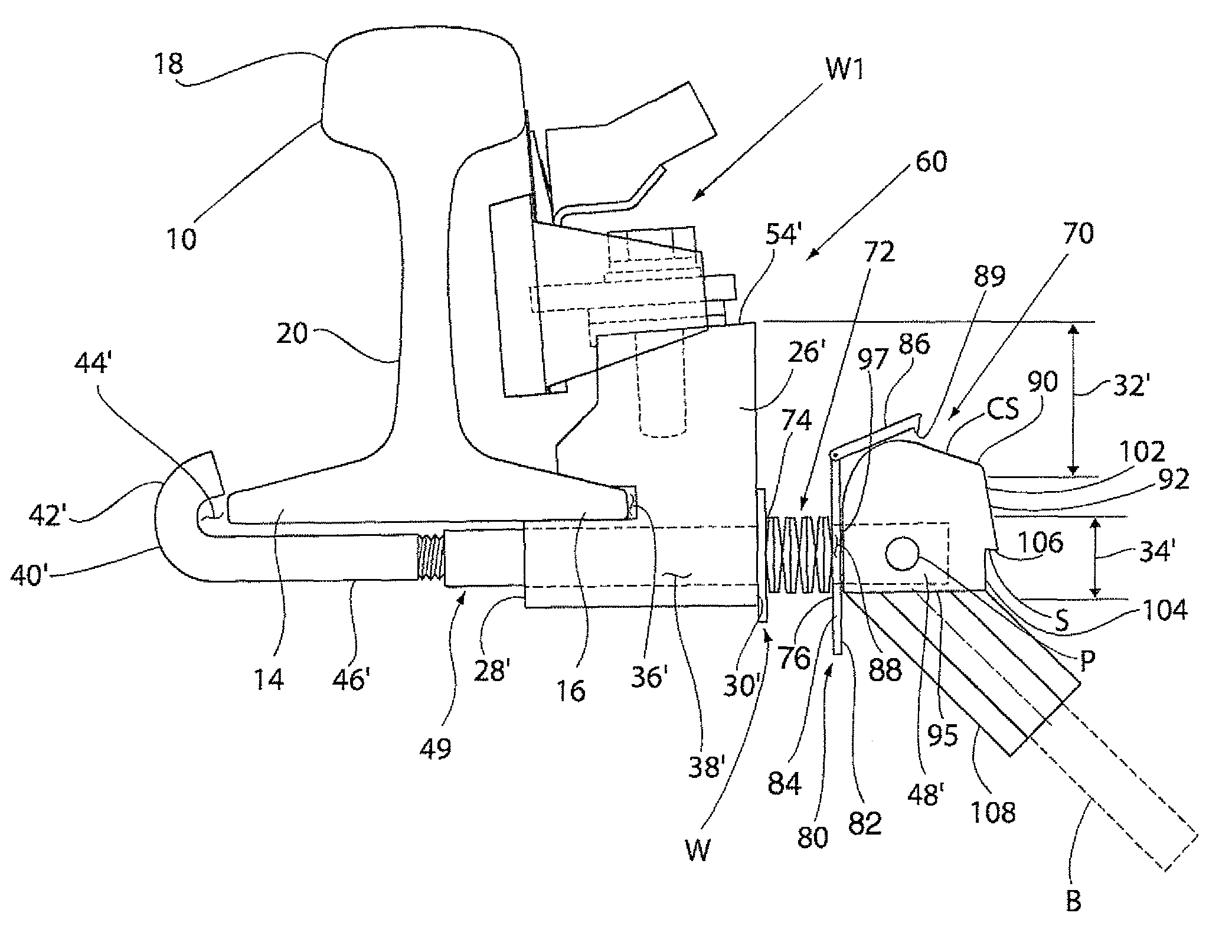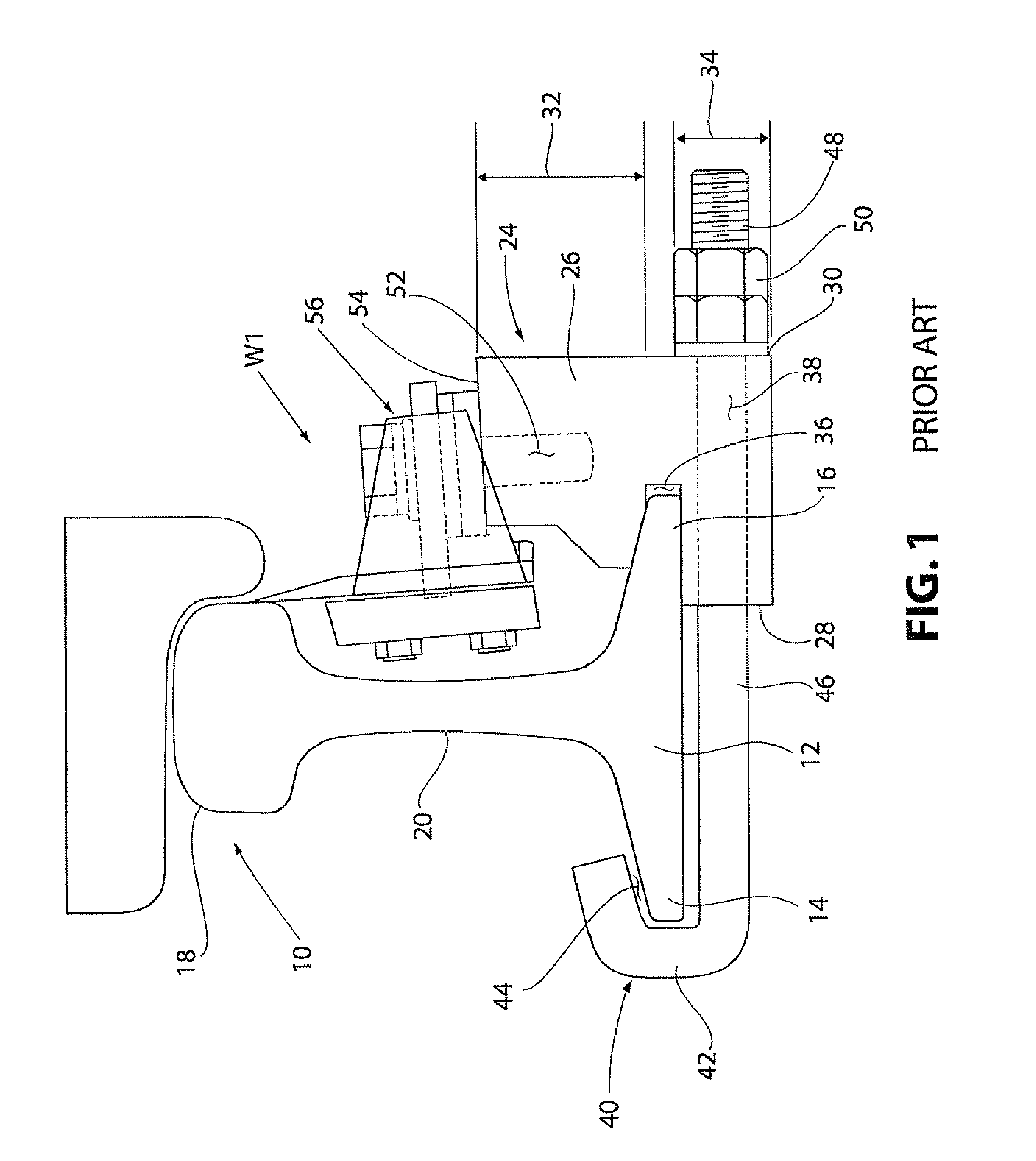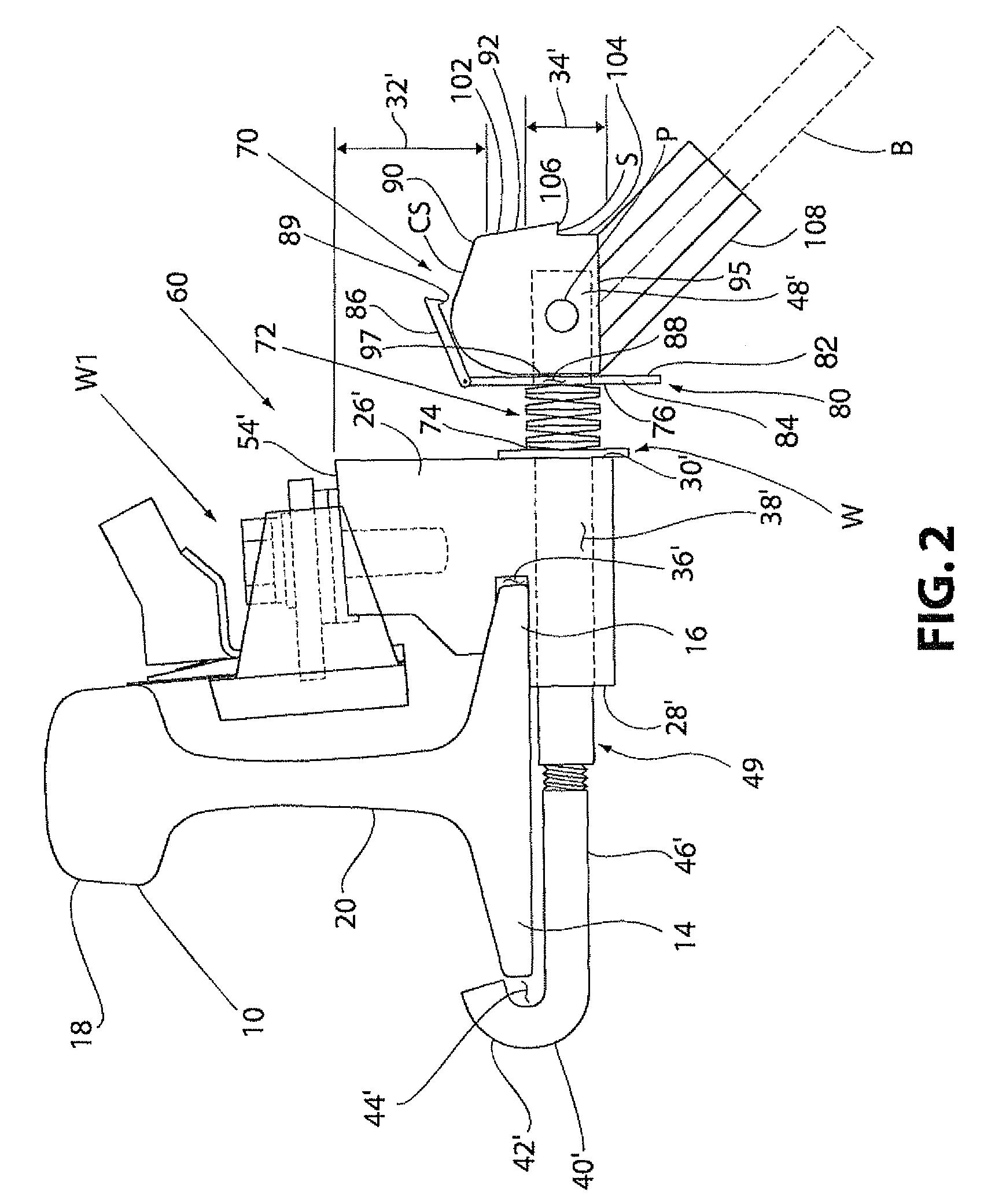Wiping bar quick clamp
a technology of quick clamping and wiping bars, which is applied in the field of quick clamping of wiping bars, can solve the problems of difficult installation and/or re-installation of prior art wiping bars in the field, difficult time-consuming and laborious, and reduce the service life of the wiping bar assembly
- Summary
- Abstract
- Description
- Claims
- Application Information
AI Technical Summary
Benefits of technology
Problems solved by technology
Method used
Image
Examples
second embodiment
[0036]FIGS. 4 and 5 show a mounting clamp 110 that is similar to mounting clamp 60, except for the differences noted below. Like reference numerals are used for like parts. Instead of clamp 60 having a J-bolt 40′ with a hooked section 42′, clamp 110 includes a bolt 40″ having only a straight section 46′ that can be threaded at an end E thereof to receive a base receiving member 112 defining a recess portion 114 therein for receiving the base flange 14 of the railroad rail 10. The member 112 includes a body 116 having a first section 118 and a second section 120 with the recess portion 114 being defined therebetween. A bore 122 (shown in phantom) is defined in the first section 118 for receiving the straight section 46′ of the bolt 40″. The bore 122 may be internally threaded to longitudinally adjust along the straight section 46′ of the bolt 40″. The straight section 46′ of the bolt 40″ includes a head portion N, which may be a nut positioned at the end E, to secure the member 112 t...
third embodiment
[0037]FIGS. 6 and 7 show a mounting clamp 130 that is similar to mounting clamp 110, except for the differences noted below. Like reference numerals are used for like parts. Here, the cam member 90 and the bracket 80 are attached to the end portion 48′ of shaft section 49 of the bolt 40″ and the bracket 80 and cam member 90 are positioned adjacent the base receiving member 112. The straight section 46′ of the bolt 40″ includes a head portion N, such as a nut fastened to the end portion 48′ of the shaft 49 of the bolt 40″, that is configured to engage the second end 30′ of the clamp body 26′. The head portion N may also be a fixed portion of the straight section 46′ of the bolt 40″ that extends radially outward from the bolt 40″. The second end 76 of the spring 70 abuts against the head portion N to prevent the spring 72 from coming off. The bore 122 of the base receiving member 112 receives the shaft section 49 of the bolt 40″ thereby allowing the shaft section 49 to move within the...
PUM
| Property | Measurement | Unit |
|---|---|---|
| length | aaaaa | aaaaa |
| size | aaaaa | aaaaa |
| angle | aaaaa | aaaaa |
Abstract
Description
Claims
Application Information
 Login to View More
Login to View More - R&D
- Intellectual Property
- Life Sciences
- Materials
- Tech Scout
- Unparalleled Data Quality
- Higher Quality Content
- 60% Fewer Hallucinations
Browse by: Latest US Patents, China's latest patents, Technical Efficacy Thesaurus, Application Domain, Technology Topic, Popular Technical Reports.
© 2025 PatSnap. All rights reserved.Legal|Privacy policy|Modern Slavery Act Transparency Statement|Sitemap|About US| Contact US: help@patsnap.com



